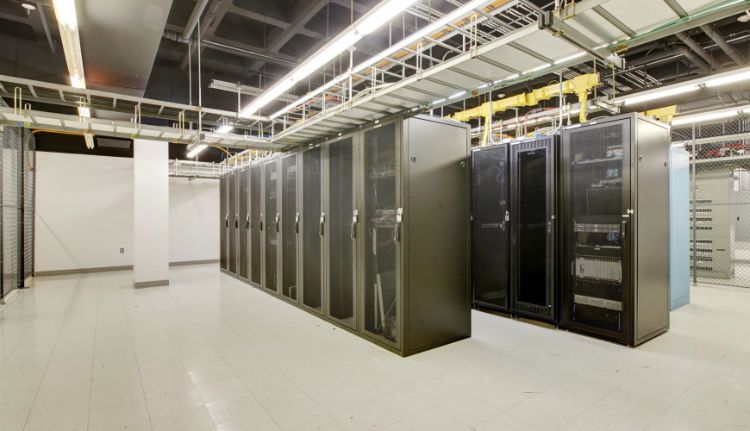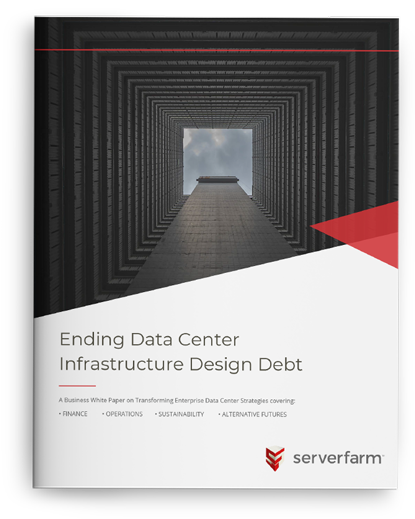Does demand mean the only answer is more building or should better use be made of data centers that enterprises have already built and paid for?
Research studies and reports point to an increasing use of existing infrastructure and concerns about growing cloud costs.
The Surveys, reports and analysis from industry bodies, market watchers and vendors suggest that all corporates are thinking more carefully than ever about their investments while seeking ways to get more from existing digital assets and physical data centers.
Enterprises recognize the advantages but also the complexities and risks of moving to the cloud. “Cloud first” IT is being replaced by with making assets “Cloud enabled.”
Here we offer a selection of findings from authoritative reports that point to trends showing why enterprises are looking to get more from existing data center assets.
1. Priority Number One: Get more from existing infrastructure
The 2021 Afcom Data Center Survey found that eighty percent of enterprise data center operators said they are not building any new data centers today.
72 percent said they won’t be building any within the next 12 months, and 62 percent said they don’t expect to need any new data centers within the next three years.
As enterprise on-prem data center footprints are not growing, there is a focus on getting more out of organizations’ existing computing facilities. That conclusion is based on two findings from the survey: widespread adoption of DCIM software and rising rack densities.
Source: AFCOM Data Center Survey 2021 https://www.datacenterknowledge.com/cloud/thinking-about-cloud-vs-prem-vs-colocation-has-gotten-smarter
2. Public Cloud End-User Spending in 2021
Worldwide end-user spending on public cloud services is forecast to grow 18.4% in 2021 to total $304.9 billion, up from $257.5 billion in 2020, according to Gartner.
IT spending is expected to grow 4% in 2021 and the proportion of shifting to cloud will accelerate.
Cloud projected to make up 14.2% of the total global enterprise IT spending market in 2024, up from 9.1% in 2020.
IDC says IT budget percentage allocated to cloud infrastructure and applications is growing and will reach around 38% this year according to IDC (although this spans infrastructure and applications).
Although the figures look impressive it should be remembered that annual global IT spending is estimated at between $1.5tn and $1.7tn dollars.
"There is a focus on getting more out of organizations’ existing computing facilities."
3. Owned data centers. The foundation of enterprise IT for the next decade
In its 2020 survey The Uptime Institute says its findings ‘…confirm UTI’s view that the enterprise-owned data center sector, while not necessarily the most innovative, will continue to be the foundation of enterprise IT for the next decade.

Nearly two-thirds of IT workloads are expected to be running in privately owned environments (large data centers, server closets and micro data centers) by 2022, with the remainder contracted to external suppliers.
Although the enterprise data center sector is falling as a percentage of the whole, the absolute amount of enterprise data center capacity is still growing.
Source: Andy Lawrence, Uptime Institute, https://journal.uptimeinstitute.com/it-venue-selection-when-choosing-in-house-or-outsource/?utm_campaign=Oktopost-Thought-Leadership&utm_content=Oktopost-twitter&utm_medium=social&utm_source=twitter
4. Companies unready to migrate?
According to an IBM survey of 380 CIOs and CTOs in US and UK SMEs (up to £999m rev) and large firms (over £1bn in revenue) most CIOs and CTOs (67%) cite the need for increased infrastructure flexibility as driving digital transformation.
Yet IT leaders who are feeling increased urgency to accelerate their organizations’ transformation find migrating to a multi-cloud environment can present significant challenges to organizations with legacy applications running large data pools.
60% say their company’s IT modernization program is not yet ready for the future and a quarter of CIOs and CTOs (24%) surveyed say their company is just starting its IT modernization journey or has yet to begin modernizing.
Source: Between November 19th and December 1st, 2020, the Managed Infrastructure Services unit of IBM’s Global Technology Services division surveyed 380 CIOs and CTOs at mid-sized ($/£50 million – $/£999 million in annual revenue) and large corporations ($/£1 billion + in annual revenue)
https://newsroom.ibm.com/2021-01-04-IBM-Study-Majority-of-Surveyed-Companies-are-Not-Prepared-for-IT-Needs-of-the-Future-Say-U-S-and-U-K-Tech-Leaders
"Organizations waste 30 percent of cloud spend."
5. Concern about rising cloud costs
- Organizations struggle to get a handle on growing cloud spend
- Organizations waste 30 percent of cloud spend
- 61 percent of organizations plan to optimize existing use of cloud (cost savings), making it the top initiative for the fifth year in a row
- Organizations continue to increase cloud spend rapidly. In doing so, they struggle to forecast their fast-growing cloud costs accurately.
- Public cloud spend was over budget by an average of 24 percent.
Source: Cloud Computing Trends: 2021 State of the Cloud Report | Flexera
6. A Battle Between Technology Stacks
Rapid transformations and the sudden influx of new technologies have ignited an era of business—one where architecture matters more than ever, and industry competition is a battle between technology stacks.
Enterprises also have more technology choices to make than ever before. From the distribution of cloud deployments, types of AI models and wide range of edge devices, to the design (and even basic physics) of hardware and computation—each layer of the stack is expanding into new dimensions.
Source: Accenture, Tech Trends 2021
7. Decisions have long term consequences
We now see more clearly that good, early decisions prevent problems later on. We need to get more from less. We now recognize more urgently the need to get more from the buildings, infrastructure, and natural resources that we already have.
Source: Report form a collaboration of leading architects and property players in the built environment – Our vision for the built environment (2020)

Read the Serverfarm White Paper: Ending Data Center Infrastructure Design Debt
A business white paper on transforming enterprise data center strategies covering finance, operations, and sustainability.




